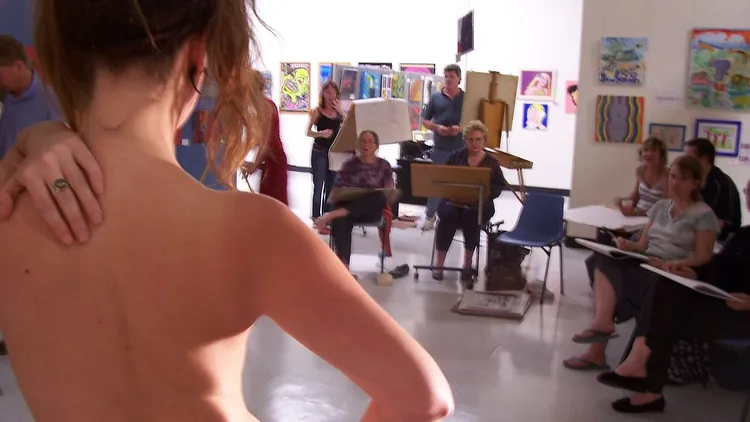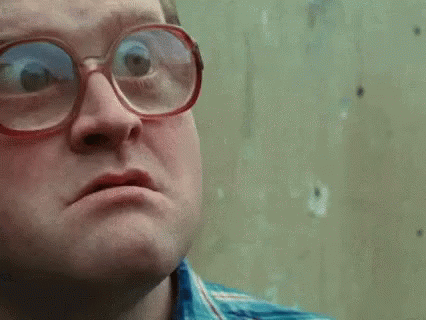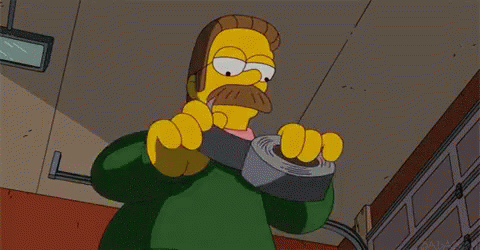
Figure Drawing Etiquette | How To Treat Models
| Tags: Education | Author:Whenever you hire a model, respect comes into play, so we will cover figure drawing etiquette. It is very important to take respect into account as to eliminate potential problems, create a comfortable environment, and have the model return for future modeling sessions.
There are many different models with different comfort levels and experience in modeling. This article is going to be covering the generals I see to be commonly occurring. Though this figure drawing etiquette isn’t a list of rules or guidelines that are set in stone, these are standard things I’ve seen that make models uncomfortable, relaxed, or willing to return or not. This figure drawing etiquette list has been something I’ve thought about over the years of attending sessions at WSU and other locations.
How to Treat Figure Drawing Models
It’s important to keep the model as comfortable as possible and each model is a bit different from others. There are some completely comfortable with nudity, there are others that a more private. As you work with each model you will get to know how they feel about it, but it’s important to start out assuming that each model is fairly private.
Keep a robe or blanket nearby for them so in between breaks the can re-robe without standing up or have a nearby moderator that can quickly grab a robe for them without making them have to change positions.
It’s also important to keep the robes and drapery washed after each session. Some models even prefer to bring their own robes and blankets. It’s best to accommodate them at all times.
Some models that are more comfortable will simply stand and put their shorts and sometimes a top on between sessions as well and they don’t mind moving around as much.
The last kind of model we will cover is the one completely comfortable with their nudity. You may occasionally come across this type who will stand between sessions, walk around, and even talk about your art while completely nude. These types are interesting because it turns the tables on you as the artist and allows you to reflect upon how comfortable you actually are with nudity and also allows an opportunity to have a new view at how we look at nudity on a personal level.
What to Say and Not Say
I have attended a lot of figure drawing sessions during my time as an artist. They started in high school as clothed sessions where a student sits on a chair, on a desk, and you draw for 10 minutes. Then college where you are often first introduced to nude figure drawing (if academically trained), and now it’s private groups.
During this time I’ve come to notice common responses that models have to different language terms we use and the actions we make which is why I add them to this figure drawing etiquette discussion.
Often, our everyday language doesn’t translate into a session when you have someone posing nicely to draw. I’ve seen very negative reactions to simple terms when a model gets the lighting places just perfectly and someone says, “oh, now that’s nice.” If the model missed the context in which it’s used, they sometimes take it as a comment on their form. This is a natural response and up to is as Artist’s to watch our words. I say it’s up to us and not the model because the model is often filled with endorphins and often feels vulnerable as the only unclothed person in the room.
It’s also best to keep the terms to the classier anatomical terms. When mentioning specific areas we usually keep private, use terms like breasts instead of boobs, buttocks instead of butt, etc. if possible keep this to a minimum as well and only reference areas we keep private as a necessity. In almost all sessions these slang terms have been used, the model responded with discomfort.

Don’t Stare At The Model
Staring At The Model
Staring is one of the difficult areas that we need to be aware of. The reality is that you will often have very beautiful female models, sometimes the very well endowed male models, and everything in between.
There is a big difference between looking while drawing, measuring, and studying the form and staring. Now, this isn’t talking about having set up with a direct on view, or even drawing genitalia, what I’m talking about is staring with lustful or curious intent. I cover this because it does happen.
Human nature often will try to take over and men and women alike can have a moment of reverting back to our savage counterparts and “catching a glance.” Most models I have found expect everyone to take a quick look, but very few of them are actually okay with it. This is where you have to overcome your own curiosities and, that’s right….not look. If you find the desire to catch a glance overwhelming and uncontrollable, this is the best time to turn your attention to preparing for the next sitting or sharpening pencils.
I’ve seen people zone out completely, lean against a horse or easel and their eyes don’t move. The hard part is they often don’t realize they are doing it, it’s their human nature kicking in, but if the model notices, they usually become uncomfortable. It’s best to be mindful of your subconscious actions and try to control them.

Taping Off Model
When you are working in long sittings, it’s important to allow the model to take breaks. You would be amazed just how difficult it is to sit for 20 minutes without moving a muscle. When the model needs a break it’s best to allow them to stretch, stand, walk, etc., and sometimes it’s not even a full 20 minutes before the break.
To make sure they return to the same position, we “tape off” the model. This is were you take masking tape and outline the model. When they move, it often looks like a crime scene with the taped outline of a body.
Most experienced models will allow the moderator to tape the majority of the outline. Sometimes they allow for it all. Often it is dictated upon there pose.
Some open position poses can allow for a model to become very uncomfortable, especially taping the inner thighs. Ask the model if they mind you taping off or if they would like to. This is another one of those, getting to know the model situations. If it’s a model that prefers to tape the inner thoughts themselves, try to make sure that the cloth, chair, or whatever else is holding the tape won’t move as they stand up and move around and make sure you have already taped the other areas such as hands, arms, etc.
Taking Photos
When it comes to figure drawing etiquette, photos can be a dangerous tool. It’s common to photograph your work and there are ways to do this and ways not to. Rarely is the model okay with being photographed, even if it’s only for your records.
If you plan to photograph work in progress pieces, like I’ve done here or here, then it’s best to wait until a session break so the model isn’t even nearby or completely robbed. Even then, keep them out of the photo. It’s also often okay to photograph your work during a session if you are noticeably turned from the model so they can see, without moving, that the camera isn’t pointed in their direction at all.
Many times, this comes down to getting to know the model and also marking site they know you aren’t photographing them. I usually wait until session breaks, however, you occasionally have a model who prefers long sessions. This is often when they are in a comfortable pose or a post hard to get back in to.
Use a wise judgment on this one.
In The End
When it comes to figure drawing etiquette, it’s best to always think of the model. After all, the more comfortable they are, they more likely they are to return. A lot of this is also just common courtesy. Think of it as if the roles were switched and how you would feel if you were the model.
What are your thoughts? Do you have anything to add to the discussion about figure drawing etiquette?